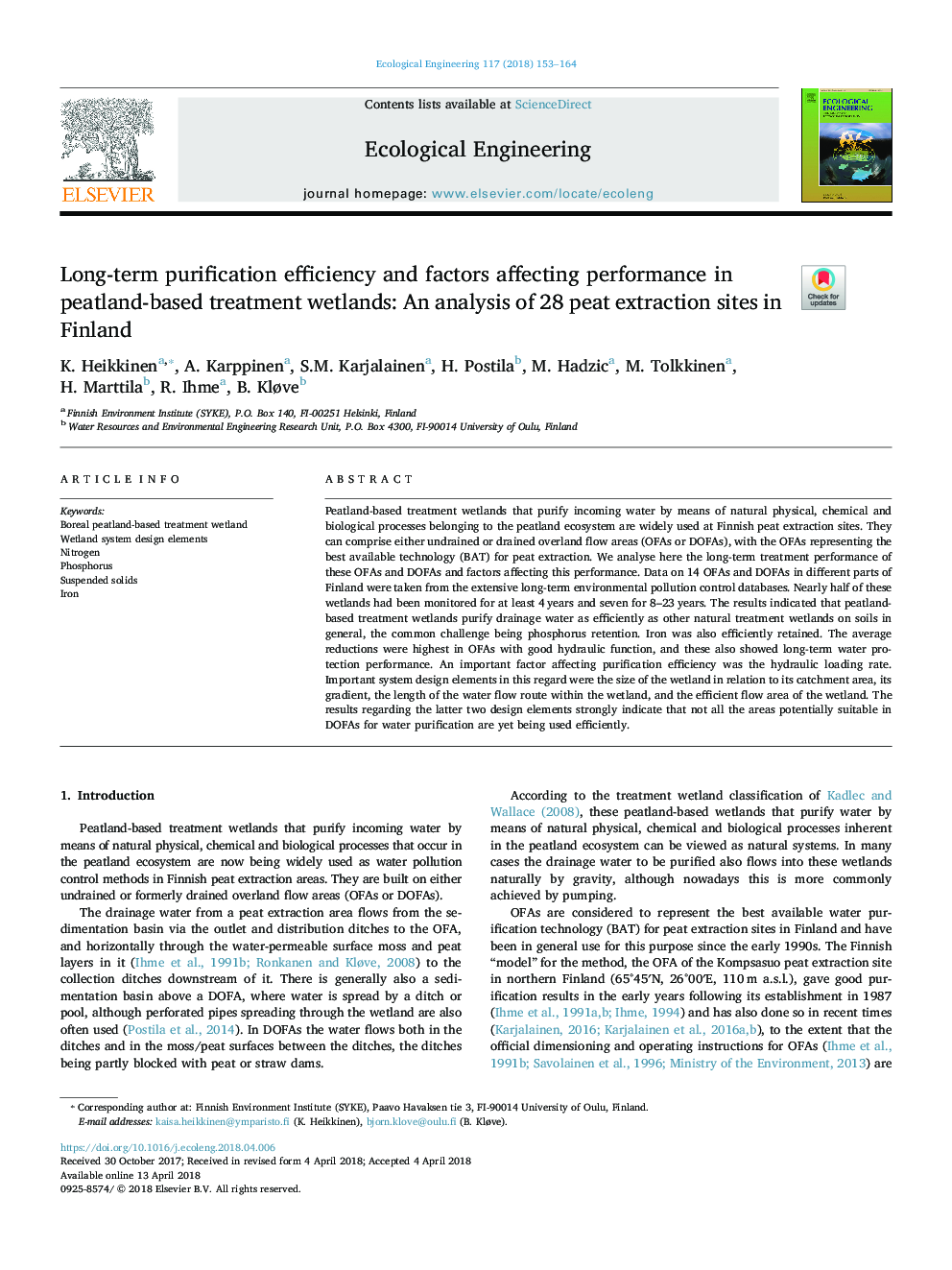| Article ID | Journal | Published Year | Pages | File Type |
|---|---|---|---|---|
| 8847888 | Ecological Engineering | 2018 | 12 Pages |
Abstract
Peatland-based treatment wetlands that purify incoming water by means of natural physical, chemical and biological processes belonging to the peatland ecosystem are widely used at Finnish peat extraction sites. They can comprise either undrained or drained overland flow areas (OFAs or DOFAs), with the OFAs representing the best available technology (BAT) for peat extraction. We analyse here the long-term treatment performance of these OFAs and DOFAs and factors affecting this performance. Data on 14 OFAs and DOFAs in different parts of Finland were taken from the extensive long-term environmental pollution control databases. Nearly half of these wetlands had been monitored for at least 4â¯years and seven for 8-23â¯years. The results indicated that peatland-based treatment wetlands purify drainage water as efficiently as other natural treatment wetlands on soils in general, the common challenge being phosphorus retention. Iron was also efficiently retained. The average reductions were highest in OFAs with good hydraulic function, and these also showed long-term water protection performance. An important factor affecting purification efficiency was the hydraulic loading rate. Important system design elements in this regard were the size of the wetland in relation to its catchment area, its gradient, the length of the water flow route within the wetland, and the efficient flow area of the wetland. The results regarding the latter two design elements strongly indicate that not all the areas potentially suitable in DOFAs for water purification are yet being used efficiently.
Related Topics
Life Sciences
Agricultural and Biological Sciences
Ecology, Evolution, Behavior and Systematics
Authors
K. Heikkinen, A. Karppinen, S.M. Karjalainen, H. Postila, M. Hadzic, M. Tolkkinen, H. Marttila, R. Ihme, B. Kløve,
